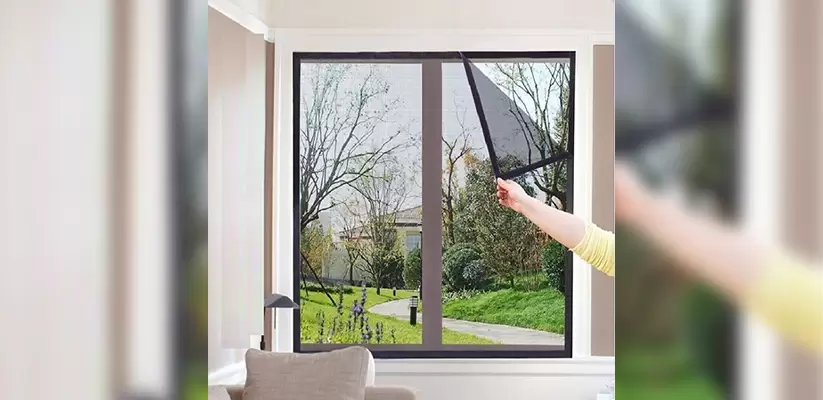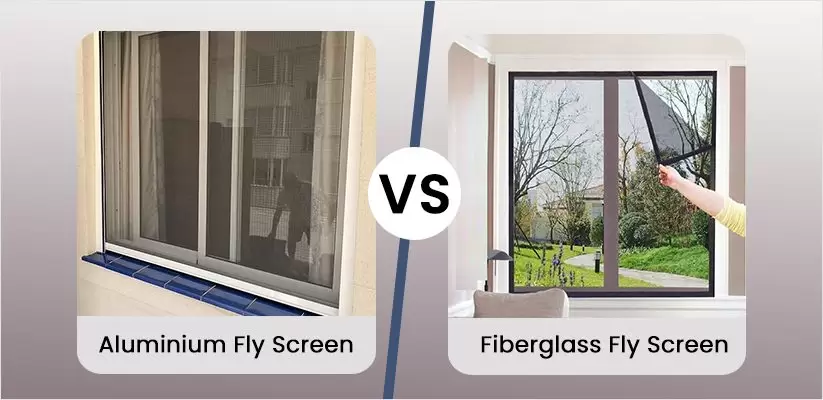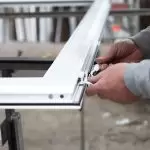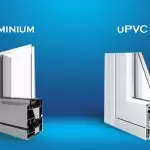When it comes to keeping our homes safe from unwanted pests while allowing fresh air to flow in, fly screens are a popular choice. They provide an effective barrier against insects like flies, mosquitoes, and other airborne annoyances. However, when selecting a fly screen, it’s important to consider the material it’s made of, as different options offer varying benefits. In this blog post, we will compare two common choices: Aluminium Fly Screen and Fiberglass Fly Screen, to help you make an informed decision for your home.
Post your Requirement
Both aluminium and fibreglass make good screening alternatives, but it helps to understand the difference between aluminium and fibreglass fly screens so that you can make the right choice based on the application. Let us take a closer look and effectively conclude the fly screen aluminium vs fibreglass debate.
Enquire Now for Upvc Windows
Fiberglass Fly Screen

The gold-standard and arguably the most widely used material for Fly Screens, Fibreglass is made from vinyl-coated fibreglass threads and is a flexible and affordable choice the world over. Available in a wide selection of different applications, Fibreglass screens are slightly opaque but it still offers good visibility from the inside. Moreover, they won’t crease like aluminium screens either. Fibreglass provides up to 75 per cent UV protection as well.
These screens can be acquired in both heavy-duty, fine and standard grades. The fine variant is a perfect fit for areas prone to an insect infestation such as coastal areas. The heavy-duty variant is perfect for places where a stronger screen is required to sustain against strong gushes of the wind and harsh weather. The standard grade is the most commonly used one and also the cheapest option available.
Fiberglass Fly Screen Pros:
- Inexpensive.
- Available in a range of options and colours.
- Doesn’t dent as it’s more forgiving when bumped.
Suggested: Fiberglass windows Advantages
Fiberglass Fly Screen Cons:
- Not as Durable and is prone to break and fray easily and hence does not last as long as aluminium.
- Tends to Fade over time due to long exposure to UV light.
- Darker than the aluminium mesh thus reducing the amount of light getting into the room\
Suggested: Window Accessories for your Home
Aluminium Fly Screen

Undoubtedly the top quality material available today for window screens, aluminium is available in limited colour choices namely dark grey, black and bright aluminium. Aluminium screening can be used both for window and door applications. Aluminium is also extremely sturdy and durable, owing to a protective finish, and has a very long lifespan while also providing excellent resistance and coverage against all weather conditions. Moreover, they are completely resistant to abrasions, corrosion, UV rays and rust. It’s also incredibly lightweight and with the right maintenance, it can easily serve you for a number of years. Furthermore, aluminium fly screens can be painted on as well and are available in a wide range of textures and patterns.
Aluminium Fly Screen Pros:
- Strong, durable and easy to maintain.
- Aluminium lasts considerably longer.
Aluminium Fly Screen Cons:
- Aluminium is easy to crease which is usually permanent in nature.
- Dents and scratches easily.
- Expensive as compared to fibreglass.
Difference between Aluminium Fly Screen Vs Fiberglass Fly Screen:
-
-
Durability:
-
Aluminium fly screens are highly durable and can withstand harsh weather conditions. They are corrosion-resistant, making them ideal for coastal areas or places with high humidity. Aluminium screens are also less likely to tear or break, making them a long-lasting option.
On the other hand, fibreglass fly screens are known for their flexibility and resilience. While they may not be as durable as aluminium screens, they still offer good longevity. Fibreglass screens can withstand moderate weather conditions and are less prone to denting or warping.
-
- Visibility:
When it comes to visibility, fibreglass screens have a clear advantage. They are made of a fine mesh material that offers excellent visibility and allows maximum sunlight to pass through. If you have a beautiful view or want to maintain the aesthetics of your home, fibreglass screens are a great option.
Aluminium screens, on the other hand, have a thicker mesh pattern due to the nature of the material. While they still provide good visibility, the mesh pattern may be more noticeable, which could slightly obstruct the view.
-
- Maintenance:
Both aluminium and fibreglass screens are relatively low maintenance. They can be easily cleaned with water and mild soap to remove dirt and debris. However, it’s important to note that aluminium screens may require occasional lubrication of the frames to ensure smooth operation.
-
-
Installation and Customization:
-
Both types of screens can be easily installed and fit most standard windows and doors. However, aluminium screens are known for their sturdiness and rigidity, which can make installation slightly more challenging than fibreglass screens. Fibreglass screens are more flexible and easier to work with, making them a popular choice for DIY installations.
Conclusion
In conclusion, both aluminium fly screens and fibreglass fly screens have their own advantages and considerations. Aluminium screens are highly durable, corrosion-resistant, and suitable for areas with harsh weather conditions. They provide excellent protection and have a longer lifespan. Fibreglass screens, on the other hand, offer good durability, flexibility, and superior visibility. They are more affordable and easier to install, making them a popular choice for budget-conscious homeowners and DIY enthusiasts. Ultimately, the choice between aluminium and fibreglass fly screens depends on your specific needs, environmental conditions, and personal preferences. Consulting with a professional can help you make the best decision for your home.
Get fast shipping on the best quality Aluminium sliding window handle on Online Store McCoy Mart























Post A Comment